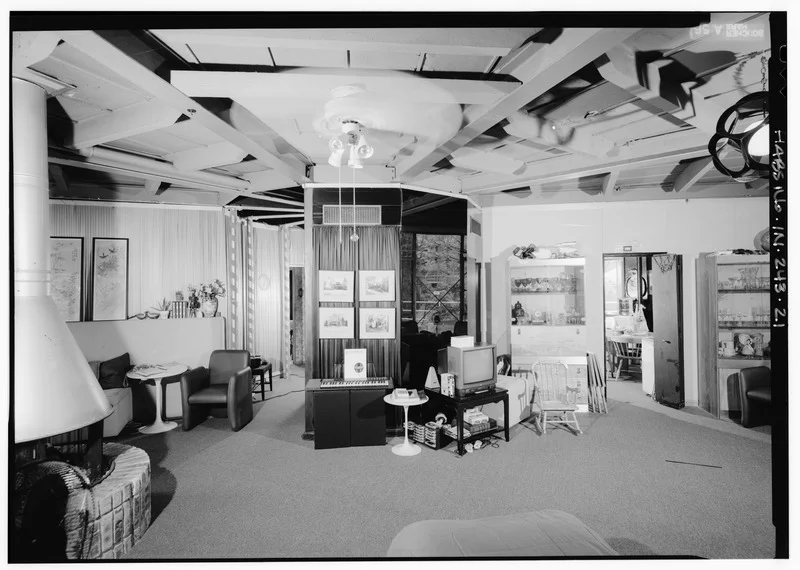World’s fairs have been held in varying locations across the globe since 1844 and are responsible for some of the most memorable buildings and structures that still stand today. The Eiffel Tower in Paris was originally built for the 1889 Exposition Universelle, San Francisco’s Golden Gate Bridge was built to coincide with the 1939 World Fair, and Seattle’s Space Needle was designed and built for the 1962 World’s Fair (you can check out photos of the construction here), just to name a few.
At the 1933 World’s Fair in Chicago, 16 homes were constructed for display to promote new building products and materials to the fair-goers. Only 7 have survived since the fair ended and 5 of them have been transported to Beverly Shores, Indiana by barge, in an attempt to preserve them. Perhaps the most famous of the 5 homes that are owned by the Indiana Dunes National Lakeshore is the House of Tomorrow.
The House of Tomorrow which debuted almost 30 years before the famous cartoon, The Jetsons, featured many of the features that we have come to expect in homes today and some that have yet to come to fruition. Among the features of the house were General Electric’s first-ever dishwasher, an “iceless” refrigerator, central air conditioning, and push button garage door opener. Those are definitely not features real estate agents would be excited to tell their clients about today, but in the 1930’s, they were pipe dreams. One of the features that has not become a standard just yet is the attached airplane hangar, which the architect, George Keck, envisioned would be a household staple in the future.
Inside the House of Tomorrow, via the National Parks Service.
The building structure itself was also extremely forward thinking. According to Indiana Landmarks, the House of Tomorrow was one of the first ever residential buildings to use a glass curtain wall structure and also one of the first to incorporate passive solar energy techniques.
After the futuristic house was transported to Beverly Shores, Indiana, its condition has slowly deteriorated and is in need of major repair. The building was recently names a National Treasure, the first in the state of Indiana, which Indiana Landmarks says will help in fundraising efforts. Representatives of Indiana Landmarks hope that enough money will be raised to begin the restoration in the spring of 2017.
What the House of Tomorrow looks like today. Photo by By Chris Light, CC BY-SA 4.0, via Wikimedia Commons
The restoration will be completed by the National Trust’s H.O.P.E crew, which is an incredible organization that trains and teaches young people in the art of preservation techniques. H.O.P.E., which stands for “Hands On Preservation Experience,” employs preservation experts to train crewmembers on tasks, such as repointing, carpentry, and window restoration. It’s a fantastic looking organization, which will give kids tangible skills to take with them to their adulthood, while also exposing them to the construction industry. 27,000 kids participate on the crew, annually, providing 13.5 million hours of service.
You can help the House of Tomorrow restoration effort by donating to the cause here or, if you’d like more information about getting involved with the H.O.P.E. crew, click here.













